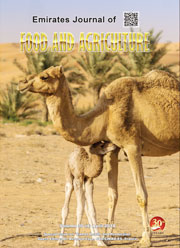Effects of wheat residue and depth-control mechanism of no-till seeder on corn sowing performance
DOI:
https://doi.org/10.9755/ejfa.2018.v30.i8.1756Abstract
No-till planting can promote soil and water conservation and has gradually been adopted on the North China Plain where an annual wheat–corn double cropping system serves as the main cropping system. Corn is planted in June immediately after the winter wheat harvest so that fields are covered with wheat residues. The presence of wheat straw makes it difficult to maintain uniform corn seed spacing and sowing depth. To overcome these problems, a new seeder unit has been developed with a depth-control mechanism on a single-sided gauge wheel. A study was conducted to compare the performance of this seeder unit with two conventional seeder units (with depth-control mechanisms using double-sided gauge wheels and a rear gauge wheel) by testing in fields with two different amounts of residue (0.78 kg/m2 and 0.64 kg/m2). Seed spacing, sowing depth, and emergence time were measured after planting. The results indicate that the newly designed seeder unit with a single-sided gauge wheel performs better on seed spacing, sowing depth and emergence time uniformity, particularly in fields with a small amount of residue, with the quality of feed index, quality of sowing depth index and quality of emergence time index of 91.90%, 95.45% and 87.87%, respectively. The new seeder unit can meet the requirements of no-till planting for corn.










 .
.